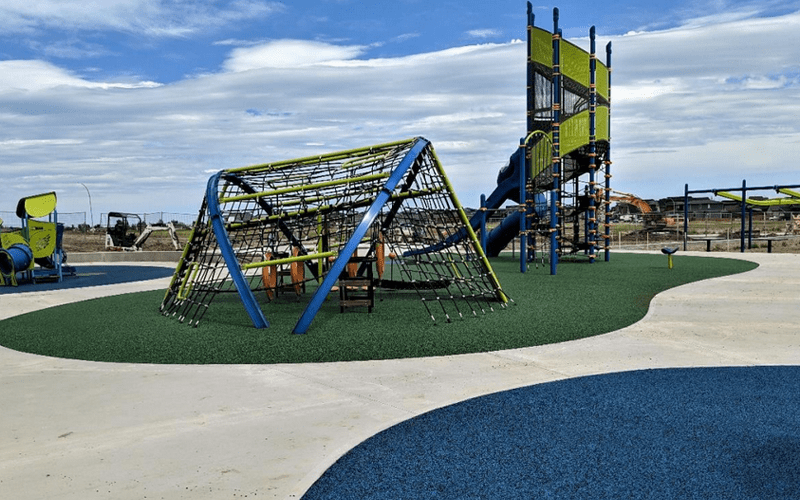Rubber surfaces create a safe, fun, and stimulating playground environment. They provide adequate protection against injury, promote children’s physical development, are durable, low maintenance, and offer attractive design and customization options. Investing in quality rubber surfaces creates a reliable and attractive play space for children to enjoy their childhood and grow up healthy fully, so the importance of rubber surfaces cannot be underestimated. These surfaces offer many benefits that contribute to children’s safety, fun, and development while they play. This type of surface provides excellent versatility due to its different presentations, so in this article, we will learn about some of the differences between PIP and rubber tiles.
PIP and Rubber tiles
Before delving into the differences, it is essential to understand what PIP and rubber tiles are. PIP, which stands for “Poured-in-Place,” is a liquid rubber tile system that is poured directly onto the floor to create a continuous, cushioned surface. PIP creates a smooth, clean, and durable surface that allows excellent mobility for strollers, wheelchairs, walkers, or any other mobility aid. On the other hand, rubber tiles are pre-formed pieces of rubber placed side by side to form a play surface. It is one of the most popular choices for protective surfaces and is environmentally friendly, as much of its raw material comes from recycled tires.
Installation
In terms of installation, the PIP process can take longer because it requires adequate drying time. In addition, skilled professionals are needed to pour the liquid rubber accurately. On the other hand, rubber tiles are easier and quicker to install, as they only need to be placed on the floor and glued together with a special glue. A professional must also carry out this process, but the process is faster and simpler.
Customization
Rubber surfaces offer a wide range of design and customization options. Bright, eye-catching colors, combined with creative patterns and shapes, can turn a playground into an attractive and exciting place for children. This encourages creativity, stimulates the imagination, and makes playgrounds welcoming places for children to play and socialize. Some consider PIP to be the best option for customization because liquid rubber allows for a wide range of designs and colors, providing the ability to create a unique and attractive playground. In contrast, rubber tiles have a predefined design, so customization options are more limited. However, this does not mean many designs cannot be made by combining different sizes and colors.
Maintenance
Rubber surfaces are generally durable and low maintenance, making them a cost-effective option in the long run. Unlike other surfacing options, such as grass or asphalt, rubber surfaces resist wear and tear and require less repair and maintenance. This saves costs in the long run and ensures that playgrounds are always ready for use. In the case of PIP and rubber tiles, both options require a certain level of maintenance, but PIP can be more prone to cracking and wear over time if proper preventative care is not performed, so in these cases, it may require regular repairs and replacements. On the other hand, rubber tiles are more durable and tend to resist wear and tear better, making them a low-maintenance option.
Safety and cushioning
Rubber surfaces provide a cushioning effect that significantly reduces the risk of serious injury in the event of a fall. Children are prone to running, jumping, and climbing on playgrounds, which can lead to accidents. However, when a proper rubber surface is installed, it creates a protective layer that absorbs impact and minimizes injuries. This allows children to have fun safely without worrying about painful falls. Both PIP and rubber tiles ensure a safe, cushioned surface for children. PIP offers greater shock absorption due to its liquid nature, which provides additional protection in the event of a fall. Rubber tiles are also safe but may offer slightly less cushioning than PIP.
Both surfaces provide additional traction, which reduces the risk of slips and falls. Playgrounds are often exposed to weather conditions, such as rain and snow, making surfaces slippery. Rubber surfaces ensure that children are guaranteed to stay steady and safe while playing, regardless of the ground conditions.
Costs
Costs can vary depending on several factors, such as the size of the area to be covered and the type of installation required. In general, PIP tends to be more expensive due to its more labor-intensive installation process and the need for customization. Rubber tiles are a more economical option for installation and maintenance.
What did you think of this topic? Do you want to know more about rubber surfaces?
If you want rubber surfaces for your project, community, school, or public park, contact us by visiting the following link.
